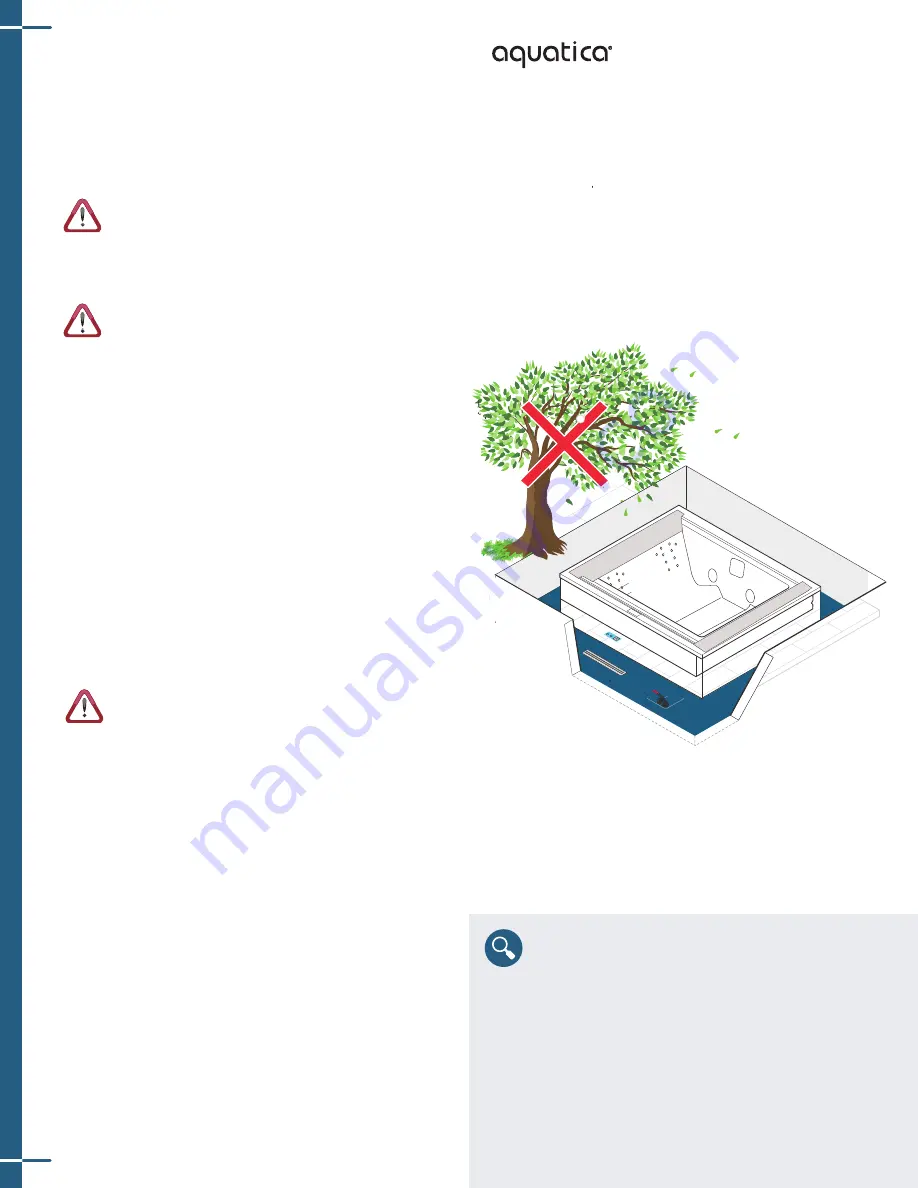
by
Downtown Spa
When choosing the position, take into account the lllooocccaaalll
eeellleeeccctttrrriiicccaaalll ssstttaaannnd
ddaaarrrd
ddsss that prohibit any electrical installation (plug
sockets, switches, lamps, etc.) in the area surrounding the
hot tub.
When choosing the position, bear in mind that the
inspection side (electrical/plumbing components side)
must always remain accessible for future maintenance.
The recommended ambient temperature for the bathtub must be
between -23˚F~+113˚F, with a relative humidity of 20-80%.
OUTDOOR INSTALLATION
Take into account the proximity of trees or hedges, and note
that debris (e.g., leaves) can cause damage to the equipment
over time that is not covered by warranty and make
maintenance more expensive and frequent.
Also assess the best position to safeguard privacy and
respect for others, as well as the best view or climatic position
consistent with local regulations.
A sunny area with increased exposure during the morning
ensures greater well-being for users!
Consider the geological composition of the soil on
which the supporting platform will be built. Soils that
are very sandy, permeable or subject to flooding could
compromise the durability of the hot tub’s support plat-
form.
INDOOR INSTALLATION
Note that the evaporation of water in the hot tub in the
presence of high internal temperatures can generate very
high levels of humidity in the environment.
To overcome this drawback, choose an environment with
good natural or forced ventilation. As an alternative, install a
dehumidification system. Humidity damage is not covered by
the manufacturer warranty.Take into account the size of the
minipool: narrow passages, doors and steps can be an ob-
stacle to its transport to the desired place.
Please note
Our spas are built to be positioned outdoors.
If you install the spa indoors, remember that it must be
able to be easily inspected or moved for any ordinary
and extraordinary maintenance operations.
3:
IDENTIFICATION OF THE INSTALLATION SITE
5
Drain




























